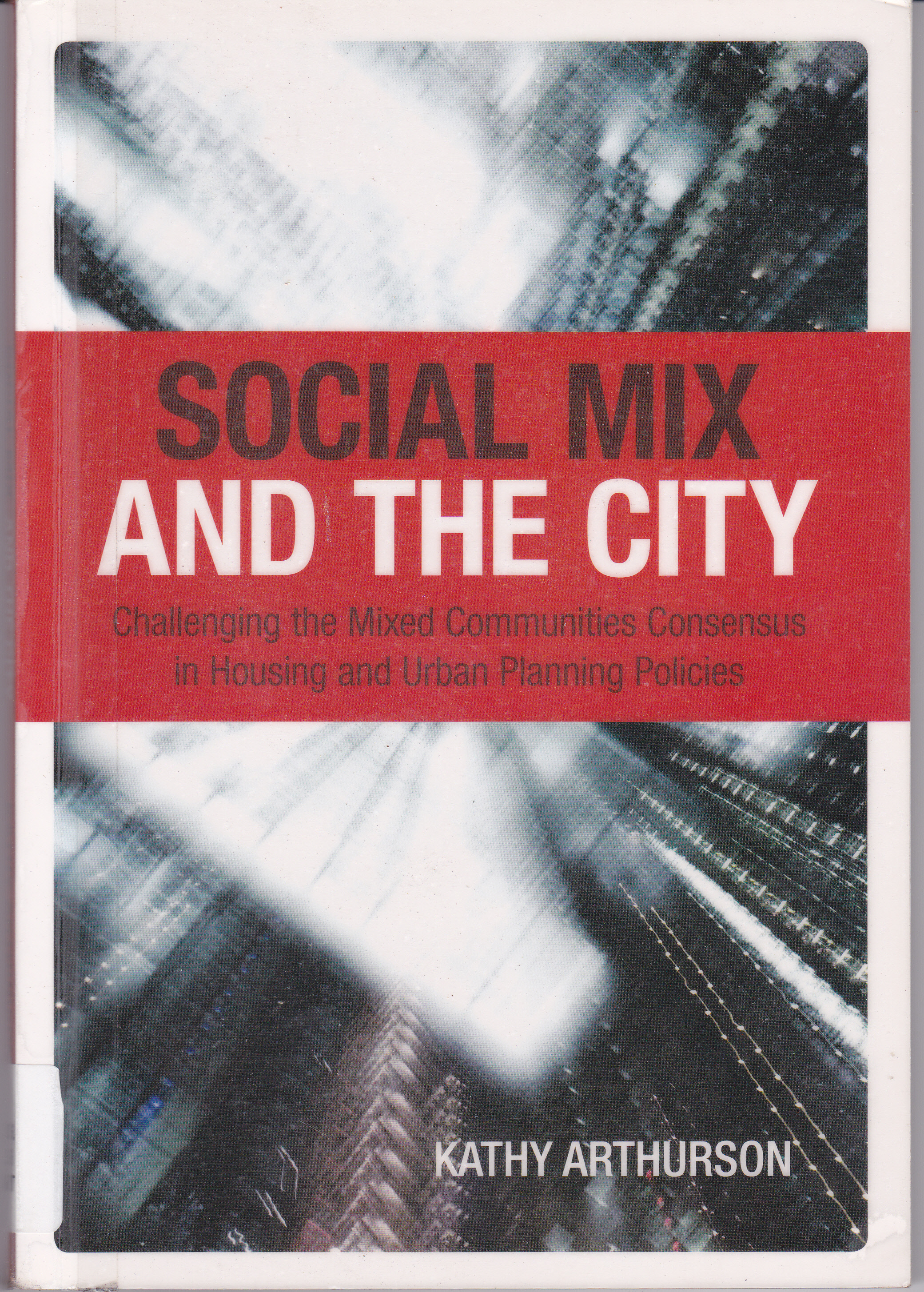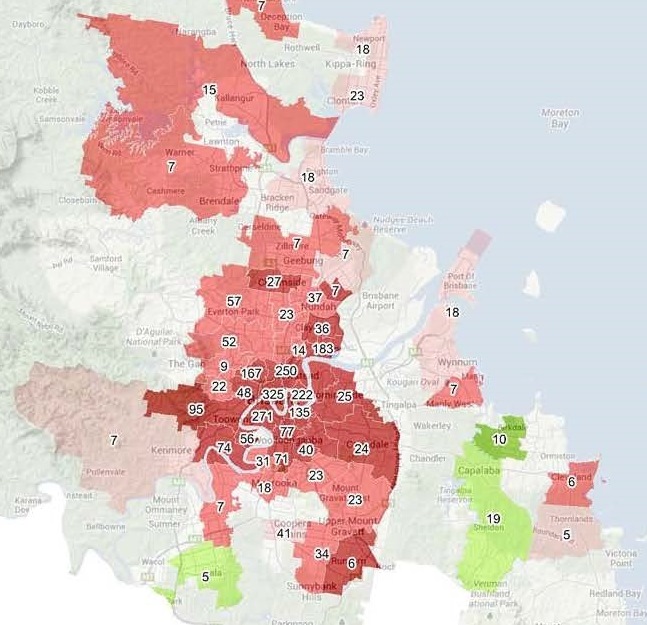I’ve been working on and off for the past few months on a large literature search on Australian public housing estate renewal projects. Renewal projects are big news in Australian public housing, as they are in other parts of the developed world. They’re driven by two issues: an ageing stock of public housing built in the decades following the second world war and which now needs replacement; and a perception of public housing estates as dysfunctional locations characterised by poverty and crime.
The first problem requires major capital works to upgrade or replace housing, or else its sale and replacement with newer housing. The standard answer to the second problem is to create “social mix” by selling public housing dwellings to owner-occupiers, bringing comparatively higher income working people into communities which were previously dominated by people on pensions and benefits. This is seen to benefit the area as a whole by reducing stigma, attracting better mainstream services (e.g. shops and doctors) because there is more income in the community overall, and reducing crime and anti-social behaviour. These benefits are intended to “rub off” on the most disadvantaged residents through better services, more access to employment and proximity to middle class role models.
The idea of social mix seems to make sense and it is widely accepted by governments and community groups here and around the world. I have argued for it myself in the past. The problem, as I’ve been finding out in my literature search, is that there’s virtually no evidence to support it.
The best introduction to this issue I’ve found is a book by Kathy Arthurson called Social Mix and the City, published by CSIRO Publishing in 2012. Arthurson is an experienced Adelaide researcher and academic who has been working in the field of estate renewal for over a decade, and this book reveals her learnings over that time.
The origin of  the idea of social mix, she says, is with some of the key social reformers of the 19th century like Joseph Rowntree, George Cadbury, Octavia Hill and Ebenezer Howard. Confronted by the extreme urban poverty and discontent that followed the industrial revolution, they proposed the creation of communities that drew heavily on the notion of the pre-industrial village community where people of all classes lived close to each other and rubbed shoulders regularly. They believed that if the poor lived close to middle and upper class families they would learn better habits of thrift, hygiene and hard work and hence improve themselves over time. These ideas grew very much out of the idea of poverty as an individual pathology and led to experiments in urban design such as Cadbury’s Bourneville Village and various new towns based, at least partly, on Howard’s Garden City design.
the idea of social mix, she says, is with some of the key social reformers of the 19th century like Joseph Rowntree, George Cadbury, Octavia Hill and Ebenezer Howard. Confronted by the extreme urban poverty and discontent that followed the industrial revolution, they proposed the creation of communities that drew heavily on the notion of the pre-industrial village community where people of all classes lived close to each other and rubbed shoulders regularly. They believed that if the poor lived close to middle and upper class families they would learn better habits of thrift, hygiene and hard work and hence improve themselves over time. These ideas grew very much out of the idea of poverty as an individual pathology and led to experiments in urban design such as Cadbury’s Bourneville Village and various new towns based, at least partly, on Howard’s Garden City design.
The idea experienced a resurgence in the post-war years where it was built into some of the earlier public housing developments, although the idea was soon buried in the pragmatic process of developing large scale public housing estates and the increased targeting of public housing to the most disadvantaged that began in the 1970s. Its current resurgence began in the 1990s as housing authorities started to deal with the legacy of the 1960s and 1970s public housing boom.
What is distinctive about its most recent reincarnation is its almost exclusive focus on public housing estates and reducing concentrations of poverty. In current policy debate there is little focus on reducing concentrations of wealth or building public housing in middle class communities. This rather begs the question of where disadvantaged public tenants will live when they have been “de-concentrated” from public housing estates.
Arthurson’s review of the evidence uncovers little to support this policy approach. There is no evidence to show that public tenants get better access to employment and training, that services improve, or that the health and wellbeing of public housing tenants improves. The stigma of neighbourhoods may be reduced as a result of the redevelopment but it is not clear if this is because of social mix or because of the physical improvements that go with renewal projects and the intensive marketing that accompanies large-scale sales programs. In any case, there is some evidence that rather than being removed, stigma is simply transferred to the public housing dwellings within the community.
As for role modelling, Arthurson’s in-depth interviews with residents in redeveloped areas in South Australia found that for the most part, home owners and public tenants don’t form close friendships, although they only occasionally experience active conflict. This is partly because home owners tend to spend a lot less time in the suburb than public tenants. They go out each day to work, and they often use recreational and social facilities outside the suburb and send their children to more distant schools. By contrast, public housing tenants are often less mobile, are less likely to be in the workforce and more likely to depend on public transport. This can accentuate social divides along class or income lines. “Social mix” doesn’t necessarily lead to “social mixing”.
Why, when the evidence is so slim, are these policies pursued with such vigour? Well, I guess it might be partly because the power of received ideas is very strong, and politicians and public servants don’t have a lot of time to read academic research. However, I also suspect there is another reason. Public housing authorities around Australia are badly strapped for cash. They operate on a financial model set up when their job was to house working families, and they are expected to pay for their operations out of their rents. Now that 90% of their tenants are on benefits and paying highly subsidised rents, they are no longer able to make ends meet. The only way they can pay for the badly needed replacement of old housing is by selling some of the new housing they build. Whether social mix has benefits for tenants or not, we’re stuck with it for purely financial reasons.
The good news is that there is no evidence that social mix is actually bad for public housing tenants. However, it does beg the question – where will the new housing come from for the hundreds of thousands of people still on public housing waiting lists?


 elay. One was that that we had problems with the funding department which slowed us down. The other was that we had so few resources and so little clout with anyone that we had no way of pushing it along. With a tenant-participation tradition, most of our key decision-makers were tenants who had never done this before and were working it out as they went, and we couldn’t afford to pay for any serious advice. We had no choice but to keep plugging away until we eventually dragged ourselves, exhausted and frustrated, over the finishing line.
elay. One was that that we had problems with the funding department which slowed us down. The other was that we had so few resources and so little clout with anyone that we had no way of pushing it along. With a tenant-participation tradition, most of our key decision-makers were tenants who had never done this before and were working it out as they went, and we couldn’t afford to pay for any serious advice. We had no choice but to keep plugging away until we eventually dragged ourselves, exhausted and frustrated, over the finishing line.

